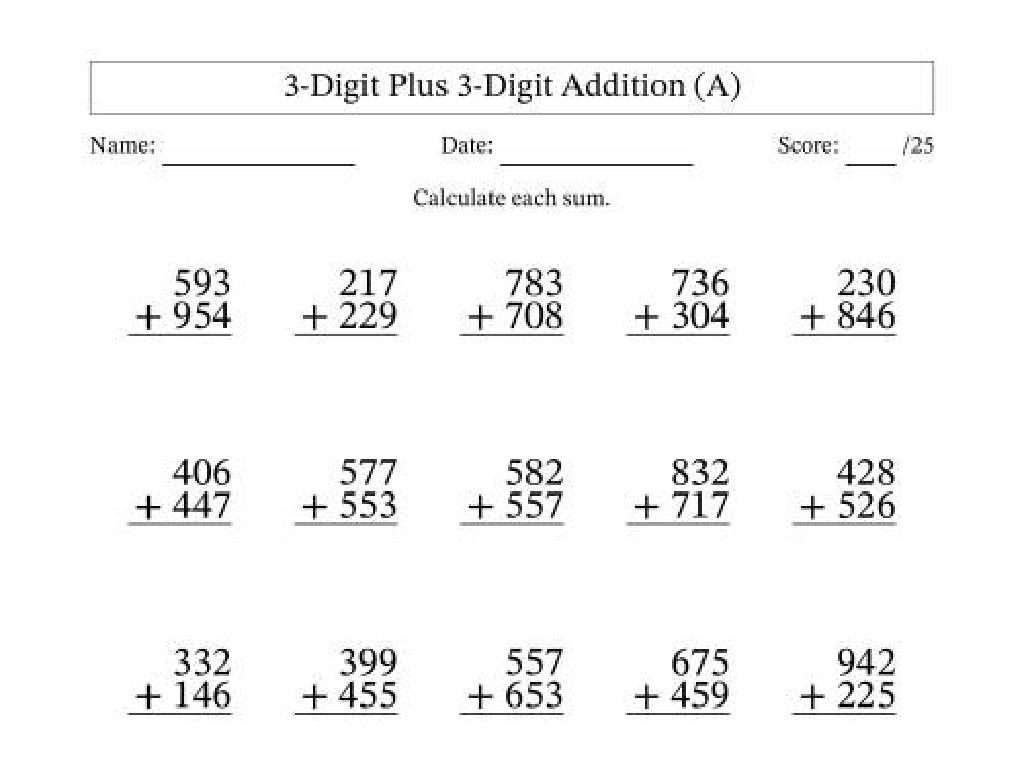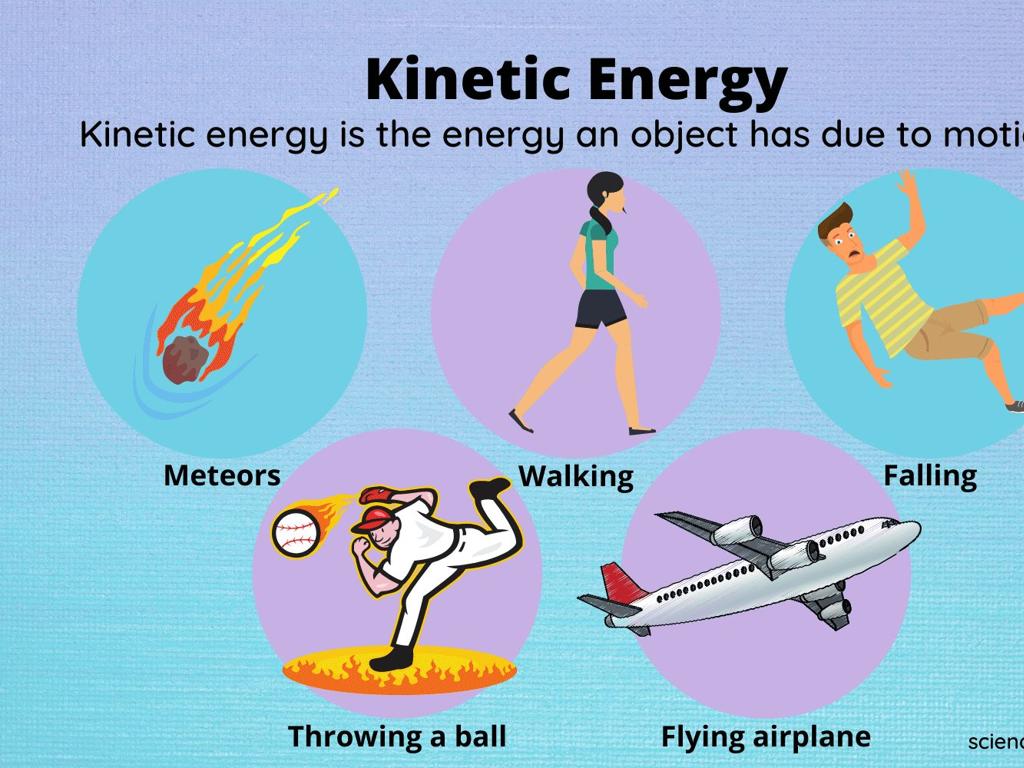Identify Rational Numbers
Subject: Math
Grade: Seventh grade
Topic: Rational Numbers
Please LOG IN to download the presentation. Access is available to registered users only.
View More Content
Welcome to Rational Numbers
– Understanding integers, fractions, decimals
– Integers are whole numbers, fractions have denominators, decimals have points
– Defining rational numbers
– Numbers that can be expressed as a fraction of two integers
– Rational numbers in daily life
– Money, measurements, and time often involve rational numbers
– Practice identifying rational numbers
|
This slide introduces the concept of rational numbers to seventh-grade students. Begin by explaining that integers, fractions, and decimals are all types of numbers they’ve encountered. Clarify that rational numbers are any numbers that can be written as a fraction where both the numerator and the denominator are integers, and the denominator is not zero. Provide everyday examples such as money (e.g., $0.75), measurements (e.g., 1/2 cup), and time (e.g., 3.5 hours) to illustrate the concept. Encourage students to think of other examples and to practice identifying whether a number is rational or not. This will help them understand the practicality and prevalence of rational numbers in their daily lives.
Defining Rational Numbers
– Rational numbers as ratios
– Any number expressible as a fraction a/b, where a and b are integers, and b is not zero.
– Includes various numbers
– Integers, non-perfect square fractions, and finite or repeating decimals all qualify.
– Decimal expansions of numbers
– Every rational number can be written in decimal form; it either terminates or repeats.
– Understanding rationality
|
This slide introduces the concept of rational numbers, which are any numbers that can be expressed as a ratio of two integers (a fraction) where the denominator is not zero. It’s important to highlight that this includes all integers (since they can be written with a denominator of 1), fractions that are not the square root of a perfect square, and decimals that are either terminating or repeating. Emphasize that while every number has a decimal expansion, only those that do not go on infinitely without repeating are considered rational. Provide examples of each type and contrast them with irrational numbers to solidify understanding.
Characteristics of Rational Numbers
– Rational numbers can be positive or negative
– Decimals: terminate or repeat
– For example, 0.75 (terminates) or 0.333… (repeats)
– All integers are rational
– For instance, -2, 0, 7 are all rational
– Rational numbers as fractions
– Every rational number can be expressed as a fraction a/b, where a and b are integers and b is not zero.
|
This slide aims to clarify the concept of rational numbers for seventh-grade students. Rational numbers include all integers, fractions, and decimals that either end after a few decimal places or begin to repeat a sequence of numbers. Emphasize that rational numbers can be both positive and negative, and any integer can be considered a rational number since it can be written as a fraction with a denominator of 1. Provide examples of each characteristic to solidify understanding. Encourage students to think of their own examples of rational numbers and how they encounter them in daily life.
Identifying Rational Numbers
– Expressing decimals as fractions
– Convert decimals to fractions by understanding place values
– Repeating patterns in decimals
– Look for numbers that repeat infinitely in a decimal
– Practice with 1/2 as a rational number
– Yes, because it can be expressed as a fraction: 1/2
|
This slide introduces students to the concept of rational numbers, focusing on their ability to be expressed as fractions. Start by explaining how every decimal has a place value and can be converted into a fraction. Emphasize the importance of recognizing repeating patterns in decimals, which is a key characteristic of rational numbers. Use 1/2 as a simple example to show that if a number can be written as a fraction, it is considered rational. Encourage students to practice with other decimals and fractions to solidify their understanding. Provide additional examples and practice problems to help students identify rational numbers in various forms.
Rational vs. Irrational Numbers
– Defining irrational numbers
– Numbers that cannot be expressed as a fraction of two integers
– Common examples of irrational numbers
– Pi (À), the square root of 2 ( 2), and the golden ratio (Æ)
– Comparing rational and irrational numbers
– Rational numbers can be written as fractions, irrational cannot
– Using examples to understand differences
– Look at fractions vs. never-ending decimals without repetition
|
This slide aims to clarify the concept of rational and irrational numbers for seventh-grade students. Begin by explaining that irrational numbers are those that cannot be written as a simple fraction of two integers, which means their decimal form goes on forever without repeating. Provide familiar examples such as Pi (À), the square root of 2 ( 2), and the golden ratio (Æ) to illustrate irrational numbers. Contrast these with rational numbers, which can be expressed as fractions, and highlight the difference using examples. Encourage students to think of other examples and to practice distinguishing between the two types of numbers.
Real World Applications of Rational Numbers
– Budgeting with rational numbers
– Allocate funds for expenses like $50.75 for groceries, $15.25 for supplies.
– Measuring ingredients using rational numbers
– Use fractions in recipes, e.g., 1/2 cup sugar, 3/4 tsp salt.
– Analyzing sports statistics
– Batting averages like .300 or points per game as 27/9.
– Understanding everyday use
|
This slide aims to show students how rational numbers are used in everyday life, making the concept more tangible and relevant. When budgeting, we use rational numbers to manage our finances, ensuring we allocate the correct amounts for different expenses. Cooking with recipes often requires understanding fractions to measure ingredients accurately. In sports, statistics like batting averages or points per game are expressed as rational numbers, which fans and players use to evaluate performance. Encourage students to think of other areas where they encounter rational numbers daily. This understanding will help them appreciate the importance of rational numbers beyond the classroom.
Class Activity: Identifying Rational Numbers
– Determine if numbers are rational or irrational
– Work in pairs on the worksheet
– Discuss your answers with your partner
– Talk about why you think each number is rational or irrational
– Share findings with the class
|
This activity is designed to help students apply their knowledge of rational and irrational numbers in a collaborative setting. Provide a worksheet with a mix of rational and irrational numbers. Students should work in pairs to encourage discussion and peer learning. As they work through the list, they should identify each number as rational or irrational, providing reasons for their choices. After completing the worksheet, each pair will share their findings with the class, which will help reinforce their understanding and allow for correction of any misconceptions. Possible numbers for the worksheet include fractions like 1/2, terminating decimals like 0.75, repeating decimals like 0.333…, and irrational numbers like the square root of 2.
Rational Numbers: Recap and Importance
– Recap: What are rational numbers?
– Numbers expressed as a fraction of integers
– Key properties of rational numbers
– They have a decimal form that ends or repeats
– Importance of rational numbers
– Used in various aspects of daily life and higher math
– Next lesson: Operations with them
|
As we conclude today’s lesson, remember that rational numbers are any numbers that can be expressed as a fraction of integers, where the denominator is not zero. They have unique properties, such as having a decimal representation that either terminates or repeats. Understanding rational numbers is crucial as they form the basis for many real-life applications, such as calculating money, measurements, and in science for expressing quantities. In our next lesson, we will delve into operations with rational numbers, which will include adding, subtracting, multiplying, and dividing these numbers. This will further enhance your ability to work with fractions and decimals in more complex mathematical problems.






